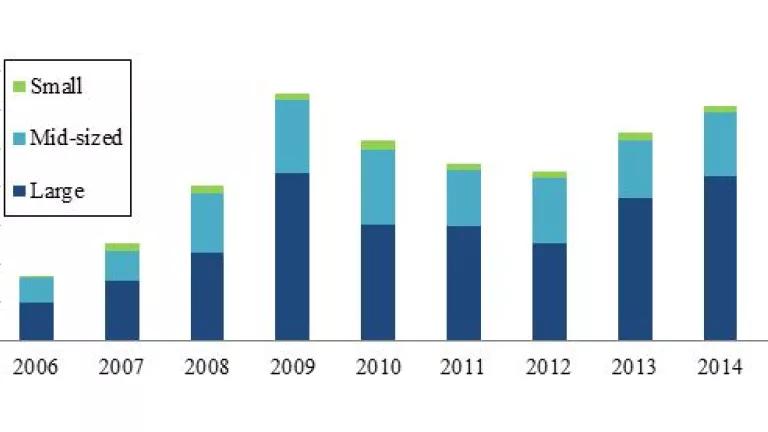Public Power Efficiency Makes Progress, But Can Do More

California’s publicly owned utilities have saved their customers more than $3 billion on energy bills over the past decade, NRDC's most recent analysis shows, but much more progress is needed to meet the state’s goal of doubling energy efficiency savings by 2030.
There are 46 publicly owned utilities (POUs), which serve around a quarter of the state’s electricity and are critical partners to achieve a clean energy future by investing in energy efficiency that lowers customers’ utility bills and cleans our air.
Our analysis shows POU investments in energy efficiency programs like weatherization and rebates for highly efficient appliances have exceeded $1.2 billion since 2006, saving more than 4.5 million megawatt-hours (MWh) of electricity—equivalent to the annual electricity consumption of almost 670,000 California homes.
After accounting for the cost of running the programs, that smarter energy use has avoided draining more than $3 billion from the budgets of California’s homes and businesses. That also means we’ve avoided the harmful carbon pollution associated with using fossil fuels to generate that extra electricity.
California’s POUs have shown consistent increases in the amount of energy savings from their programs over the past few years, but the majority comes from the two largest utilities, Los Angeles Department of Water and Power (LADWP) and Sacramento Municipal Utility District (SMUD). These large POUs saved almost 475 gigawatt-hours of electricity, enough to power more than 70,000 electric passenger vehicles for a year. Mid-sized POUs and small POUs also increased their total energy savings from efficiency programs between 2014 and 2015, mid-sized POUs by three percent and small POUs by 45 percent.
More can be done
While these are great achievements, there is still more that can be done. Moving forward, we urge the publicly owned utilities to expand the reach and achievements of their efficiency programs in the wake of California’s ambitious climate goals by implementing the following recommendations:
1. Charge customers for electricity services in a way that rewards saving energy.
Utilities have a critical role in sending the right price signals to encourage customers to save energy. First, all publicly owned utilities should adopt revenue decoupling to ensure they recover their authorized fixed costs regardless of electricity sales, as LADWP and Glendale Water and Power have adopted. Second, utilities should adapt how they charge for electricity services to incentivize the acquisition of—and optimal operation of (in concert with the grid’s needs)—energy efficiency and other clean distributed (onsite) energy resources such as solar panels. These include tiered rates or time-variant rates that vary depending on the amount of electricity used. Charging customers an unavoidable up-front charge (called a fixed charge) that removes any incentive for them to save energy should not be pursued. Any fixed charges should be rolled back to minimal levels truly reflective of unavoidable costs.
2. POUs should prepare an ambitious energy efficiency potential study and set goals that enable them to significantly increase energy savings.
POUs in California are developing a potential study to determine energy savings goals for the next 10 years. This effort gives POUs the opportunity to invest time and resources into analyzing market opportunities to capture significant cost-effective energy savings. We urge the POUs to clearly identify opportunities in their territories to enable a doubling of energy savings and ramp up efficiency, without reductions due to staff or budget constraints.
3. Create programs that incentivize homeowners to bundle energy efficiency improvement with other investments in renewable distributed energy resources.
Finally, in the changing energy landscape, utilities are shifting from centralized generation (e.g., traditional power plants) to clean distributed energy resources (DERs), including energy efficiency, demand response-enabled devices, small-scale renewable generation, electric vehicles, and energy storage. Energy efficiency can further be used to help integrate renewables into the grid. Therefore it is important to design programs that bundle efficiency with other DERs, both of which will help California meet its carbon reduction goals.
The California POUs continue to set an example for other public utilities across the nation looking to expand energy efficiency. The POUs can continue their efficiency leadership by creating ambitious goals and programs to help meet the state’s goal to double energy efficiency savings by 2030 and save their customers even more money while cleaning the air.
